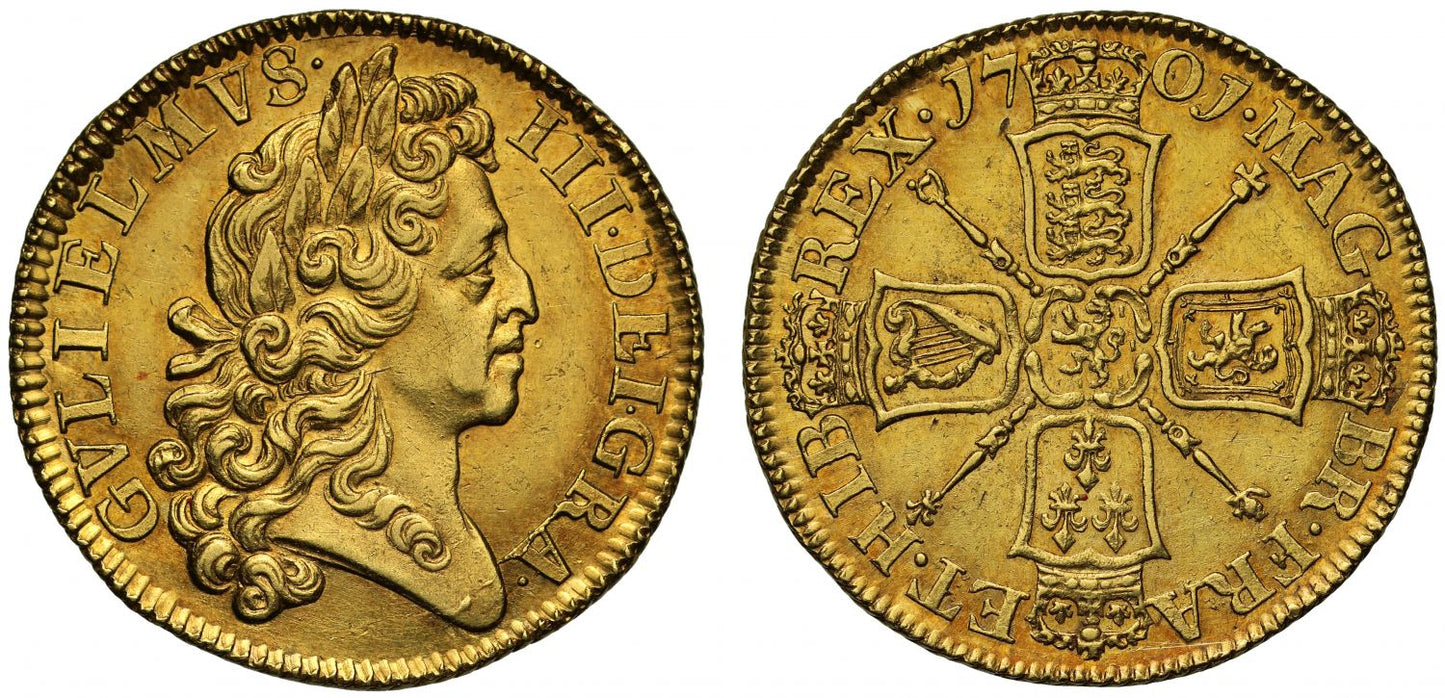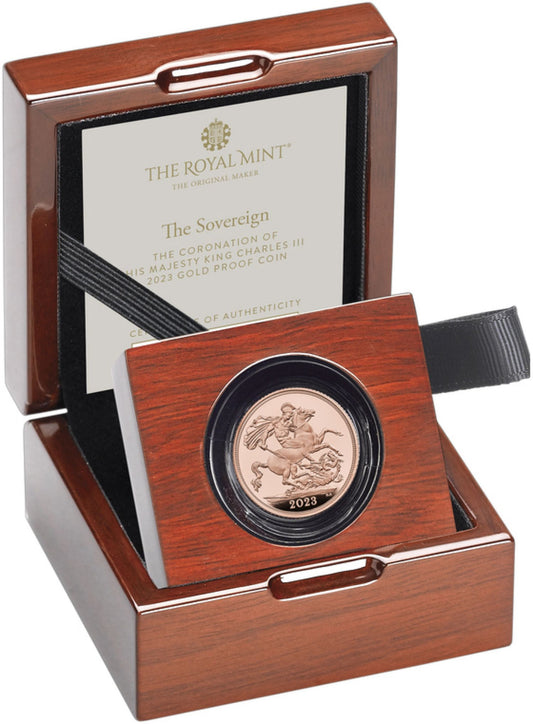FAQs
What makes a coin valuable?
I have coins to sell, what’s the next step?
How will my purchases be shipped?
What happens if I’m not entirely happy with my purchase?
William III 1701 "Fine Work" Guinea AU58+ R4
William III (1694-1702), gold Guinea, 1701, fine work style, laureate head right, abbreviated Latin legend and toothed border surrounding, GVLIELMVS. III. DEI. GRA., rev. crowned cruciform shields, sceptres in angles, Lion of Nassau at centre, date either side of top crown, abbreviated Latin legend and toothed border surrounding, .MAG BR.FRA ET.HIB REX., edge milled (Schneider 513; MCE 188; EGC 427 R4; S.3465). Toned with underlying brilliance, some very light surface marks and nicks, has been graded and slabbed by NGC as AU58+ which at time of writing is the second finest graded at both services, extremely rare.
NGC Certification 5880730-008.
The gold output was very high in 1701 at £1,190,019 worth of gold coins produced across the four denominations of that year. Sir Isaac Newton was by now the Master Worker of the Mint since 1699, and had applied his mind to the problem of circulating foreign gold coin in the UK which was prevalent at this time, with French Louis d'Or and Spanish Pistoles both circulating in commerce at 17/6d each when compared to a freshly minted Guinea at 21/6d. Newton tested the worn foreign coin and typically found it to be worth 17/1d and emphasised to the Treasury secretary that such coin was merely bullion and not official coin of the realm. A resulting Proclamation of 5th February 1701 brought the value of the foreign coin down to 17 Shillings, with the consequence that many were sent to the Mint for converting to current coin, and some £1,400,000 worth accounted for more or less the whole coinage of 1701 and 1702 like the fine work Guinea piece herewith. The fine work Guinea seems to have been the minority coin in the mintage as not as many survive as the more plentiful Two Guineas and the most common Five Guinea; the regular second bust Guineas and Half-Guineas are also more plentiful and commonly seen compared to the fine work Guinea.
The only higher graded piece is the one sold by Goldberg as part of the Millennia Collection in 2008. Very few of these coins survive in such a good state of preservation.
FAQs
What makes a coin valuable?
I have coins to sell, what’s the next step?
How will my purchases be shipped?
What happens if I’m not entirely happy with my purchase?













